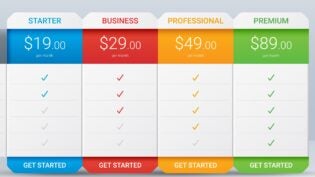
There’s a huge amount of discussion focusing on Volume And Velocity in sales. SaaS companies trying to build traction and subscriptions person by person, department by department—at least until they confront the enterprise. Companies envying the growth of these companies are copying them, looking again for Volume And Velocity.
We see endless research about the importance of speed in following up leads, minutes and second count—literally. The advantage goes to the first person to follow up a lead.
The sales process is changed—but as it should, when we pursue individuals, or small departments, we are no longer looking at a complex selling process. When the investments we’re making are pretty small, the risk of implementation is small, and the ability to cancel is great—the process of buying and selling becomes much less complicated.
Sales cycles are measured in minutes, hours, days—rarely weeks and months.
Being successful requires specialization. SDR’s do much of the heavy lifting, at least from a volume point of view. Their goal is to move people through qualifying and the next meeting or demo as quickly as possible. The good ones are viciously focused on this.
The problem, however, is they are focused on their goals, not the customers’. They are moving at their cadence, not the customers’.
The “control dials” in the Volume And Velocity world are pretty simple: Hire the right people, ramp them as quickly as possible. Bring them up to speed in weeks or a couple of months. For organizations not focused on Volume and Velocity, the ramp time is at least 10 months.
Since the sales cycle is short, it doesn’t take long to weed out the poor performers. (So maybe you don’t have to focus so much on the right people?)
Once a person is on board, it’s all about volume and velocity. Technology can solve those problems. We can send out endless emails, we can generate content, we can leverage social channels. When the outcomes aren’t right, we crank up the volume. Likewise, technology enables us to call within seconds. So every piece of content that gets downloaded gets a call—often even before the content has finished downloading, and certainly before the customer has read it.
But that doesn’t matter, the SDR, never wants to talk about the content and the customer’s interest in it. Their goals are qualification and setting up the meeting/demo—so the customer interest is not really relevant. It actually slows us down. If they aren’t interested in buying, having a meeting, or doing a demo, we have to move on—after all, there are all those other leads piling up. (For a discussion on this, look at Is Your Prospecting Call Relevant and Do your Sales People Understand The Objective Of Your Content?)
One wonders, what would happen if we were relevant in that first call? We know what the customer is interested in—at least part of it, because of the content they selected. What if we talked to them about those interests instead. Yeah, it screws up our Velocity metrics—but it increases our Volume Conversions, so we don’t have to be as concerned about continually pumping up the volume.
What about trust, credibility, relationships? In the world of complex B2B sales, we know those are foundations of success. (Not the only things, but certainly very critical.)
In the Volume And Velocity world, it doesn’t seem to be a sales problem—that’s Customer Success’s worry. It’s their job to retain and grow the customer–they have a year to three years to do it. But they aren’t as focused on Volume And Velocity.
Volume And Velocity are very powerful when you are dealing with TAM’s of millions. Take sales tools as an example, by 2020, some surveys put total sales people at 20M. Getting 0.5% of that market means you’ve build a subscriber business of 100K users! Even if you are looking at departments, the numbers of “departments” are still in the millions.
For startups, those figures are seductive, the stuff of supersonic growth rates: What’s the time to my first 1000, my first 10K subscribers. Double that every year, in a little over 2 more years, you are at 100K–0.5% of the market, but your investors are thrilled, you’ve grown at supersonic rates! They are so happy, you probably race through your B, C, D rounds.
You keep feeding the machine, more Volume, more Velocity. Analytics can have you calling customers before they know they should be interested. Yeah, hit rates are lower, but we know how to solve that problem—more Volume.
But then your aspirations change. Rather than continuing to go after individuals and departments, you go after the enterprise. You’ve done the math, let’s say an organization has a few thousand sales people—or a few thousand of whatever persona you are targeting. You look at the Volume and Velocity you have to go through to get 100% those people to subscribe. Customer Acquisition Costs become a problem, it becomes really expensive, difficult, and long. It’s difficult to continue your growth rates, when you are acquiring 1-10 customers at a time. It becomes very expensive. You have to start acquiring 100’s to 1000’s of customers at a time. You have to go after the Enterprise Sale.
The world changes, you are in a complex buying/selling process. You have to deal with the 5.4 (or whatever number the buying group becomes). You have to build trust, credibility, relationships. You have to create value in every engagement. Selling becomes more than qualifying and doing a demo. You have to understand what the customer is trying to achieve—not just one, but a lot of them, remember we are in a complex sale. You have to align the disparate interests, you have to create a business justified solution. You have to help the customer sell up the food chain. You have to worry about implementation, risk, change management. Even though everything is in the cloud, what you are doing disrupts the entire organization, the executives worry about risk, change management, integration into the rest of the workflow, data integration, security and so forth. When you were dealing with individuals or departments, these issues weren’t paramount.
All that you did in your Volume And Velocity cycles change—it seems to go to a grinding halt. What worked in your old mode no longer works! Volume And Velocity have hit a brick wall. Sure you have the reference of the people in the company who are currently using the products, but the concerns of the decision makers are about the impact on the whole organization (in fact, they may decide to stop those current users—bad for churn numbers).
Volume/Velocity Selling is different than the Complex Sale. There is value and great results in both. If your targets are individuals/departments, and the investment/risk is very small, Volume/Velocity works. If your targets are the enterprise or the investments/risks are large, we have to change the way we sell–Complex Sales/consultative approaches become critical.
There is a lot for all of us to learn. Those of us who have focused on the Enterprise/Complex sales can adapt some of the principles of Volume/Velocity sales, there are some good lessons. For those with a Volume/Velocity model, at some point you hit a brick wall—at least in B2B environments. At some point Volume/Velocity becomes unsustainable by itself. You have to change and go after the Enterprise.












